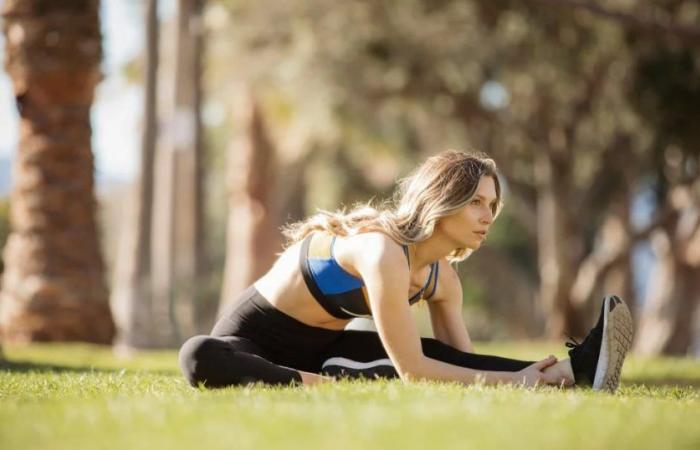MONDAY, June 17, 2024 (HealthDay News) — Exercising in a natural setting (jogging in a park, biking on a trail) may be more beneficial than exercising indoors, a new review suggests.
But access to public natural areas varies widely, and not everyone has the opportunity to exercise outdoors, the researchers noted.
“The research is clear that natural environments could be an effective place to promote physical activity,” said lead researcher Jay Maddock, director of the Texas A&M University Health and Nature Center. “People generally like to be outdoors, with parks, trails and community gardens being the most popular places.”
Currently, more than 3 in 4 adults do not get the recommended weekly amount of physical activity in the United States, the researchers noted in background notes.
Such exercise can prevent chronic health problems such as heart disease, diabetes, some cancers and osteoporosis, the researchers said. It can also improve immune function, improve mood, help manage pain, and prolong life expectancy.
In the study, published in a recent issue of the American Journal of Lifestyle Medicine, researchers analyzed data from previous research on the benefits of outdoor exercise compared to indoor workouts.
Studies revealed a combination of potential benefits of outdoor physical activity: better mood and brain function, better social interaction, greater enjoyment of exercise, and possibly even less perceived exertion.
However, the researchers noted that the studies focused on short-term outcomes of less than a year. It remains to be seen whether these benefits accrue over the long term.
Additionally, certain groups are less likely to be able to exercise in a green space, the researchers added.
For example, rural areas often have less access to natural spaces because there is more privately owned land, Maddock said.
“For example, nearly 98 percent of Illinois residents live within a half-mile of a park, compared to just 29 percent in Mississippi,” Maddock said in a university news release.
Men are more likely to use parks and green spaces than women, possibly because of safety concerns, the researchers found.
And black adults are less likely than whites, Latinos or Asian/Pacific Islanders to exercise in parks, according to a study in Los Angeles.
“In addition, children, the elderly and people with disabilities face challenges accessing natural spaces,” said lead researcher Howard Frumkin, director of the Land and People Laboratory at the Trust for Public Land. “Ensuring these spaces are safe and easy to navigate, with appropriate programming, could help increase use of parks and other natural environments.”
Maddock and Frumkin said doctors should consider “prescribing” parks and natural environments to their patients.
“Recommending that patients spend more time in these environments is known as natural prescribing, or ‘ParkRx,’ and although more research is needed, studies to date suggest this approach is effective,” Maddock said.
Health professionals could also help fund efforts to create and maintain parks and green spaces, and participate in community efforts that promote their use, the researchers added.
“It’s clear that using parks and natural environments for physical activity could be a potentially powerful tool to promote two important health behaviors at the same time,” Maddock said. “This could be especially important given that most Americans do not get enough exercise or spend enough time outdoors.”
More information
The American Council on Exercise offers more information on outdoor exercise.
SOURCE: Texas A&M University, press release, June 13, 2024





